
The Elisa guidebook
.pdf
Fig. 5.
Direct C-ELISA for antigen. Reaction of antigen contained in samples with the enzyme-labeled antibody directed against the antigen on the solid phase blocks the label from binding to the solid-phase antigen. If the antigen has no cross-reactivity or is absent, then the labeled antibody binds to the solid-phase antigen and a color reaction is observed on developing the test.
Again there is a requirement to titrate the direct ELISA system, which is then challenged by the addition of test antibodies. The competitive aspect here is between any antibodies in the test sample and the labeled specific antibodies for antigenic sites on the solid-phase bound antigen. The test sample and
Page 25

pretitrated labeled antibodies are mixed before adding to the antigen-coated plates.
2.4.3¡ª
Direct I-ELISA: Test for Antigen
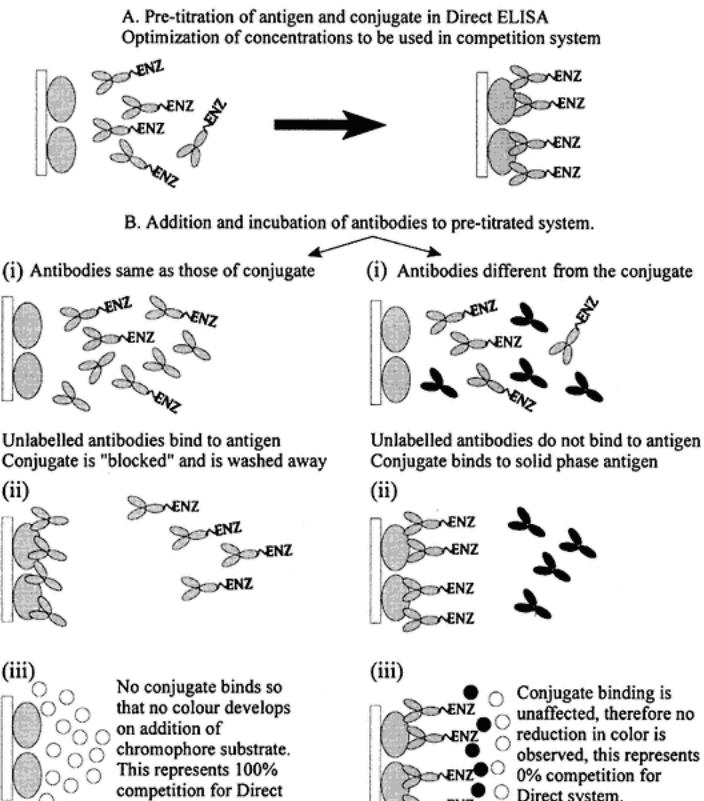
Direct I-ELISA for antigen testing is not an available alternative since test antigen has to be mixed with pretitrated labeled antibody Thus, competitive conditions apply. One variation is that test antigen can be premixed with the labeled antibody and incubated for a period before the mixture is applied to the antigen-coated plates. In practice, this makes no difference to the assays in which antigen is added to the coated plates initially.
Page 26

Fig. 6.
Direct C-ELISA for antibody. The degree of inhibition by the binding of antibodies in a serum for a pretitrated enzyme-labeled antiserum reaction is determined.
2.4.4¡ª
Direct I-ELISA: Test for Antibody
The test sample possibly containing antibodies specific for the antigen on the plates is added and incubated for a period. There are then two alternatives: (1) the wells can be washed and then the pretitrated labeled antibody can be added, or (2) pre-titrated labeled antibody can be added to the wells containing
Page 27
the test sample. In these ways, the advantage in terms of binding to the antigen on the wells is given to the test sample. Bound antibodies then inhibit or block the binding of the subsequently added labeled antibodies.
2.5¡ª
Competitive and Inhibition Assays for Indirect ELISA
2.5.1¡ª
Indirect C-ELISA Antigen Measurement
Indirect C-ELISA antigen measurement is illustrated in the following diagram and in Fig. 7.
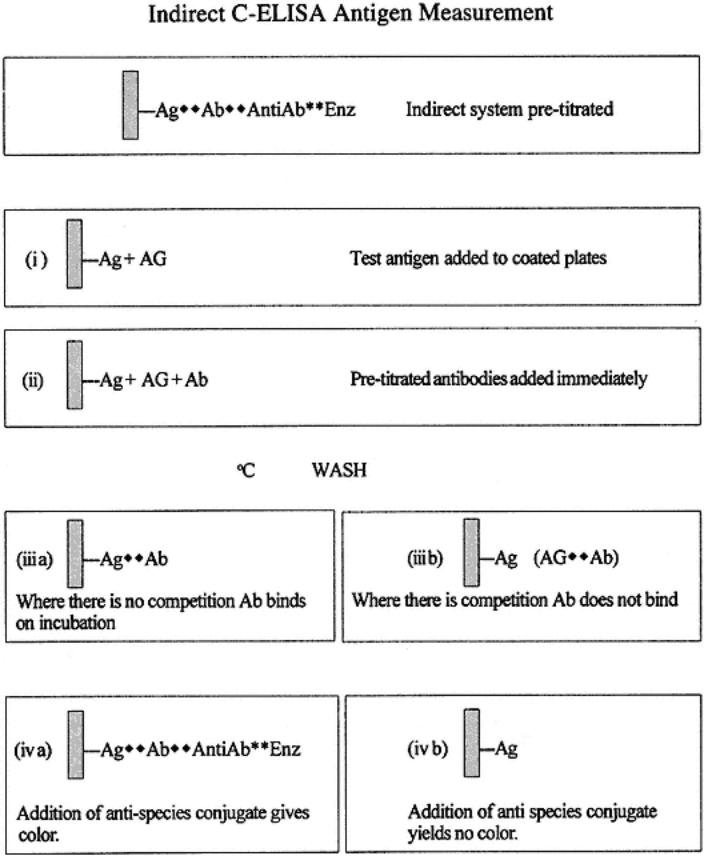
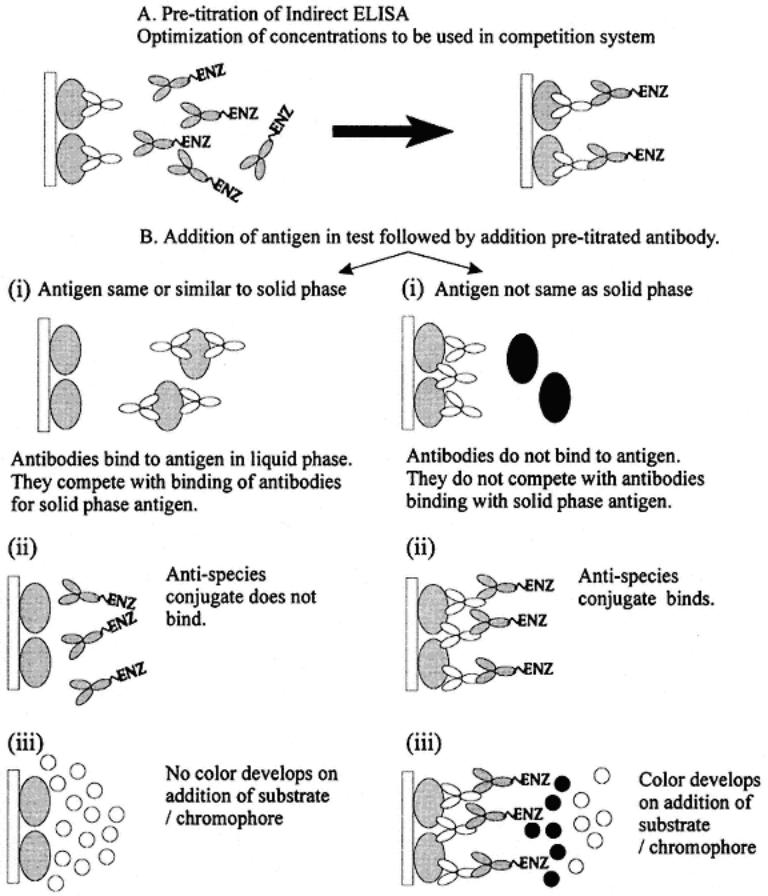
Page 28
Fig. 7.
Indirect C-ELISA antigen measurement. The degree of competition by the binding of antigens in a sample for a pretitrated enzyme-labeled antiserum reaction is determined.
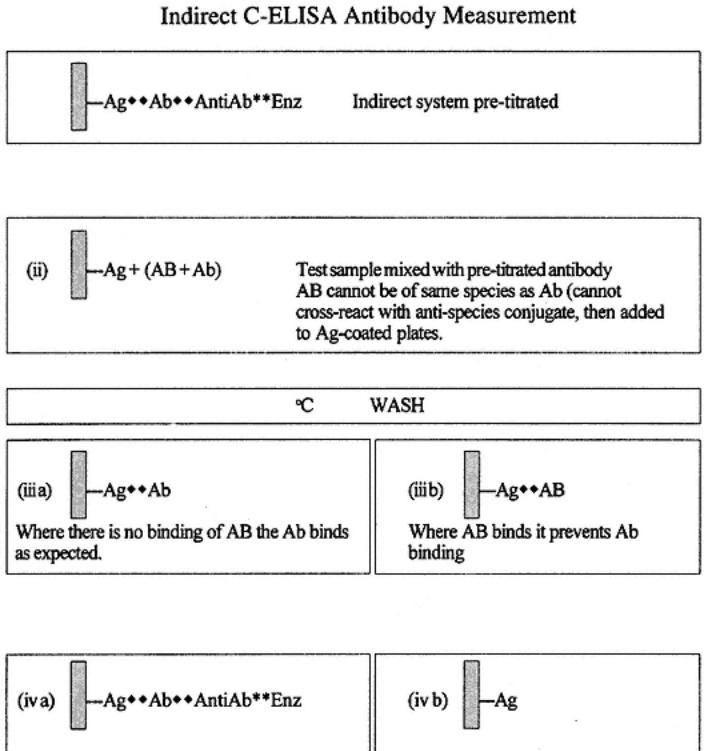
2.5.2¡ª
Indirect C-ELISA Antibody Measurement
Indirect C-ELISA antibody measurement is illustrated in the following diagram and in Fig. 8.
Note that the same pretitrated system can be used for both antigen and antibody titration. The respective analytical sensitivities of the systems as adapted
Page 29
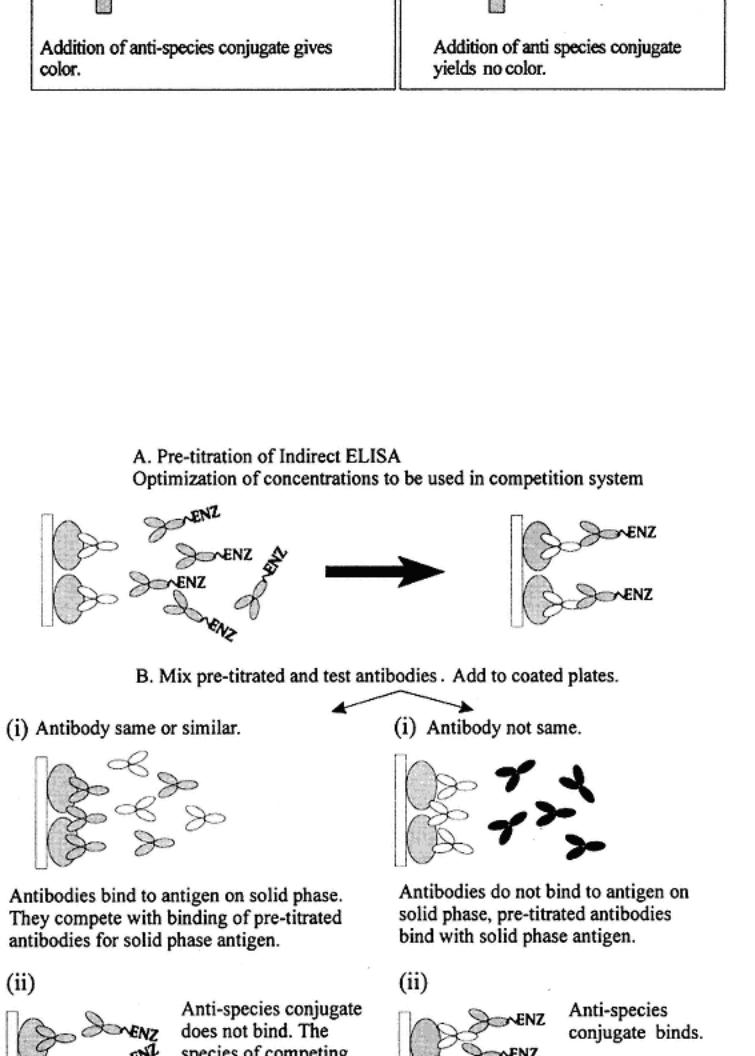
for antigen and antibody measurement can be altered with respect to the initial titration of the reagents in the pretitration phase. Thus, by using different concentrations of antibody, the effective sensitivity for competition or inhibition by antigen or antibody can be altered to favor either analytical sensitivity or specificity. It is important to realize this when devising assays based on competition or inhibition, whereby they can be adapted to be used to measure either antigen or antibody. Alterations in the concentrations of reactants can offer more idealized tests to suit the analytical parameters needed (degrees of required specificity and sensitivity). This is particularly important when devising assays based on polyclonal antibodies, which are dramatically affected through the use of different dilutions of sera (alterations in quality of serum depending on relative concentrations of antibodies against specific antigenic determinants).
Page 30
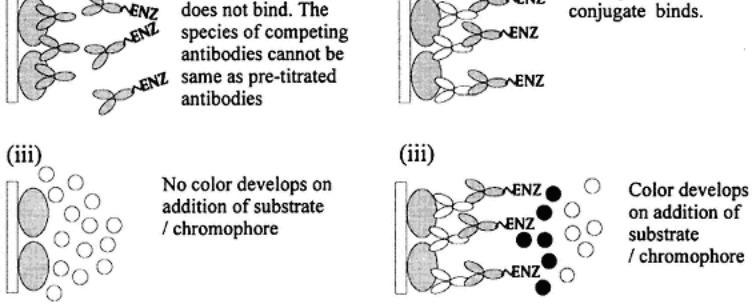
Fig. 8.
Indirect C-ELISA antibody measurement. The degree of competition by the binding of antibodies in a sample for a pretitrated enzyme-labeled antiserum reaction is determined.
2.5.3¡ª
Indirect I-ELISA Antigen Measurement
The test sample containing antigen can be premixed with the pretitrated antibody and incubated. The mixture can then be added to antigen-coated plates. The advantage of binding with the antibody is then in favor of the test sample. This is illustrated in the following diagram.
Page 31
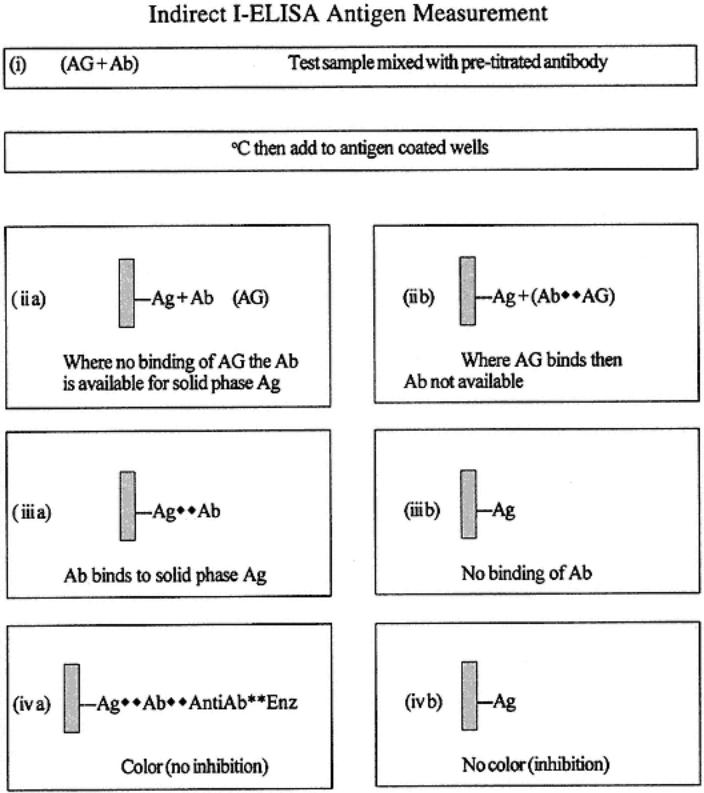
2.5.4¡ª
Indirect I-ELISA Antibody Measurement
Principles of indirect I-ELISA antibody measurement are shown dramatically as follows. The sample containing AB is added to the antigen-coated plates and incubated. There are then two alternatives: (1) a washing step followed by the addition of pretitrated antibody, or (2) no washing step and the addition of pretitrated antibody to the mixture. This is illustrated in the following diagram. Once again the advantage of binding is afforded to the sample.
